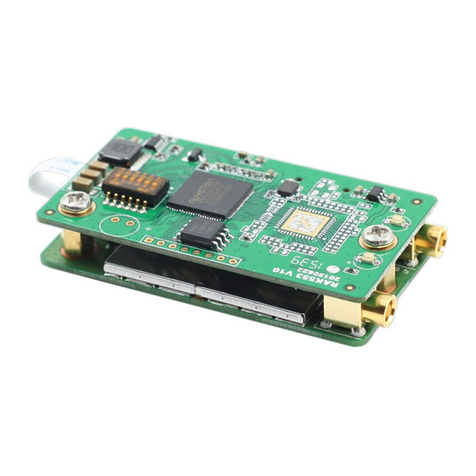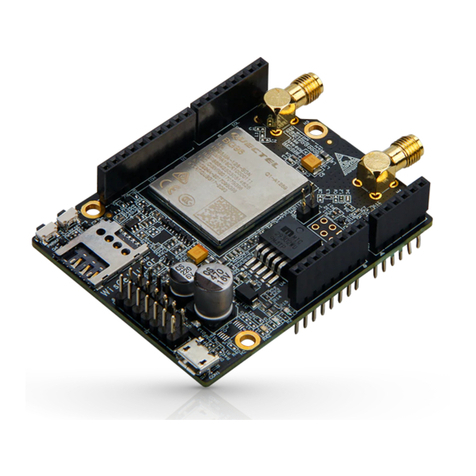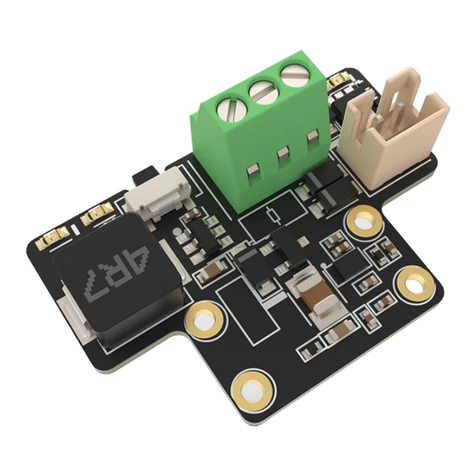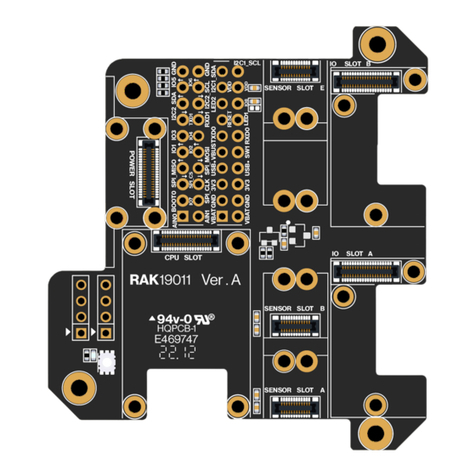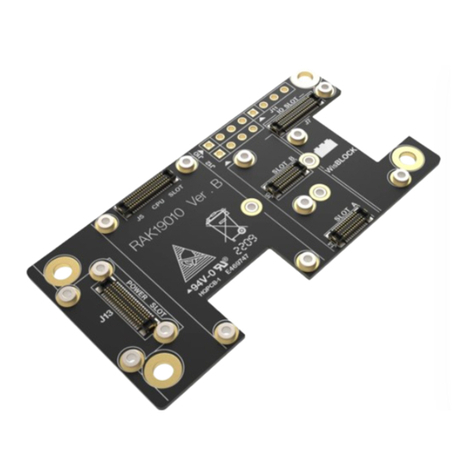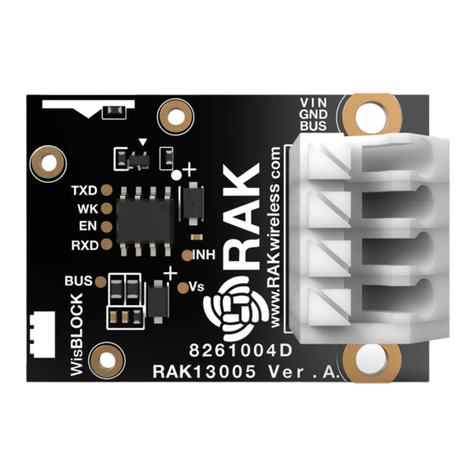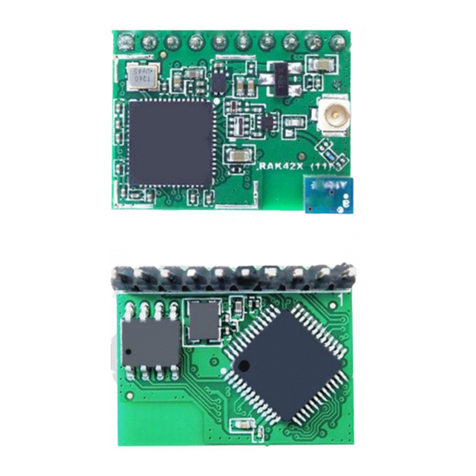Figure 6: Battery and solar panel connectors polarity
Rechargeable Battery
RAK19012 can be powered by a rechargeable Li-Ion/LiPo battery via the dedicated connectors, as shown in
Figure 6. The matching connector for the rechargeable battery wires is a JST PHR-2 2 mm pitch female . A
cable assembly for the rechargeable battery connector is also available for purchase in RAK store .
⚠
WARNING
Battery can cause harm if not handled properly.
Only 3.7-4.2 V Rechargeable LiPo batteries are supported. It is highly recommended not to use other
types of batteries with the system unless you know what you are doing.
Make sure the battery wires, both rechargeable and non-rechargeable, match the polarity on the
RAK19012 board. Not all batteries have the same wiring.
Solar Panel Connection
The battery can be recharged, as well, via a small Solar Panel, as shown in Figure 6. The matching connector for
the solar panel wires is an JST ZHR-2 1.5 mm pitch female . A cable assembly for the solar panel connector is
also available for purchase in RAK store .
⚠
WARNING
Only 5 V solar panels are supported. Do not use 12 V solar panels. It will destroy the charging unit and
eventually other electronic parts.
The GND pin of the solar panel connector is located on edge of the board. Make sure the solar panel
wires match the polarity on the RAK19012 board.

